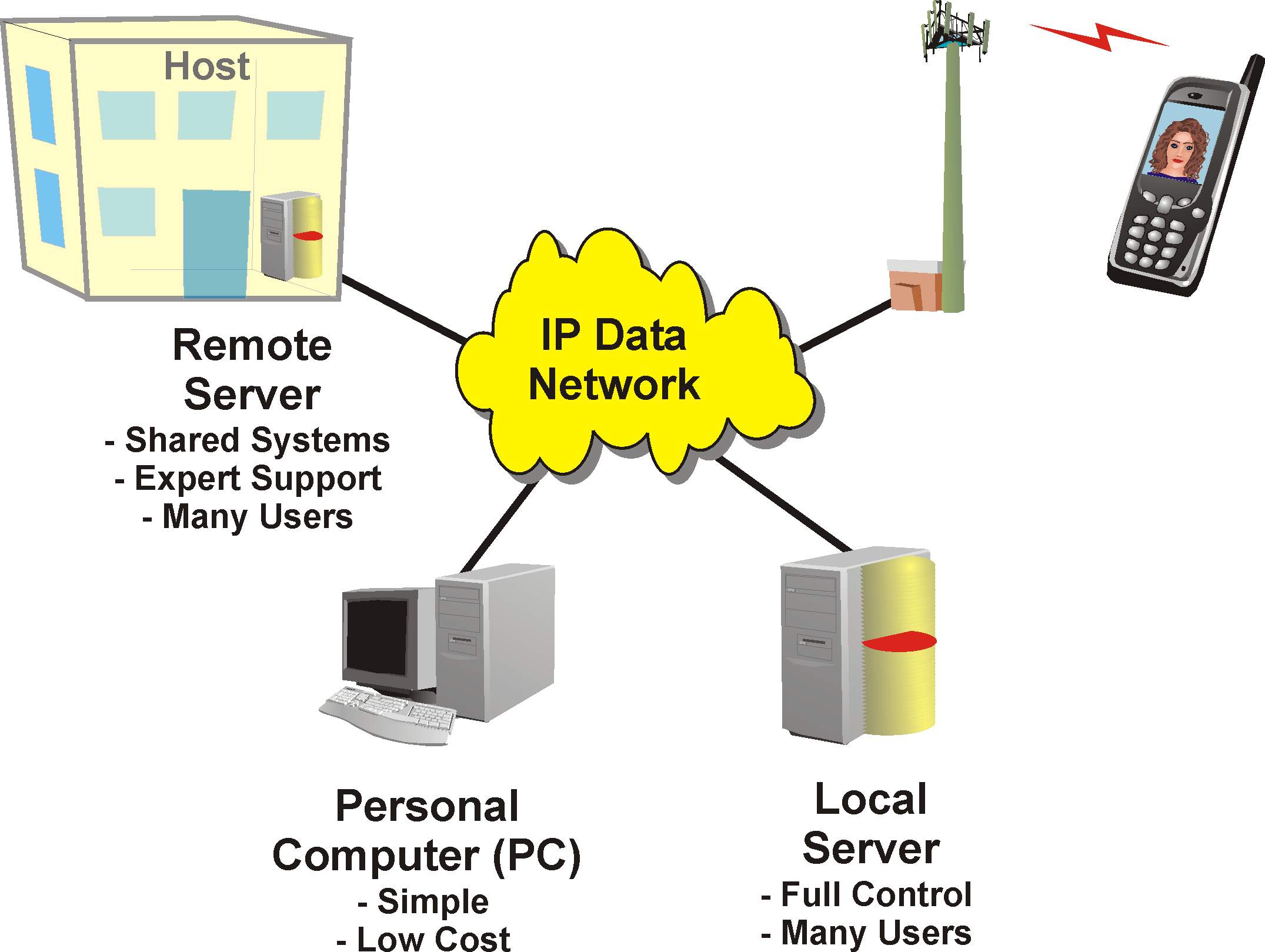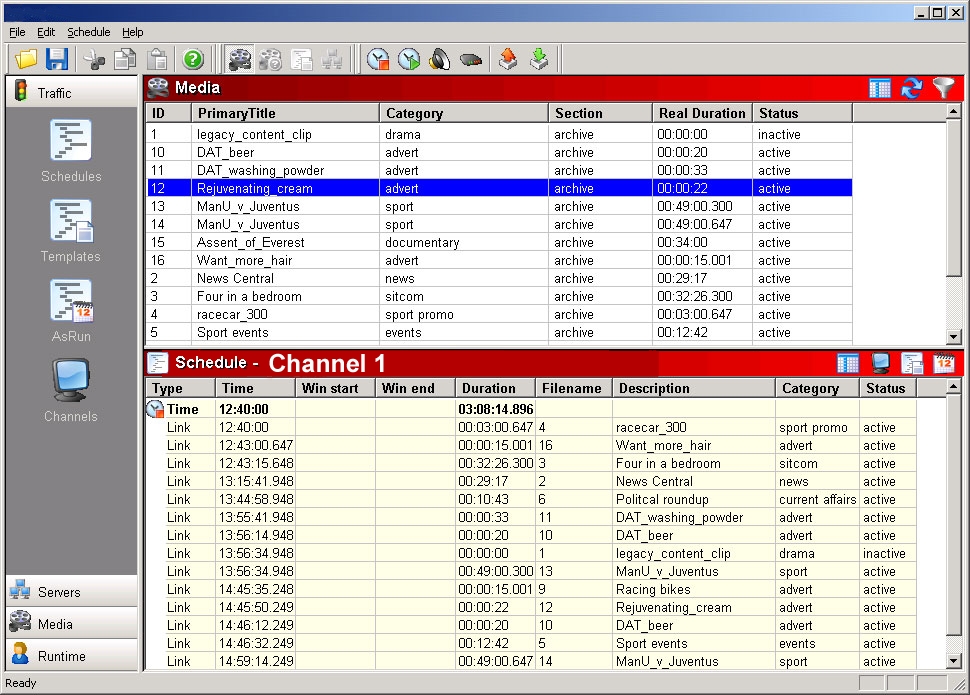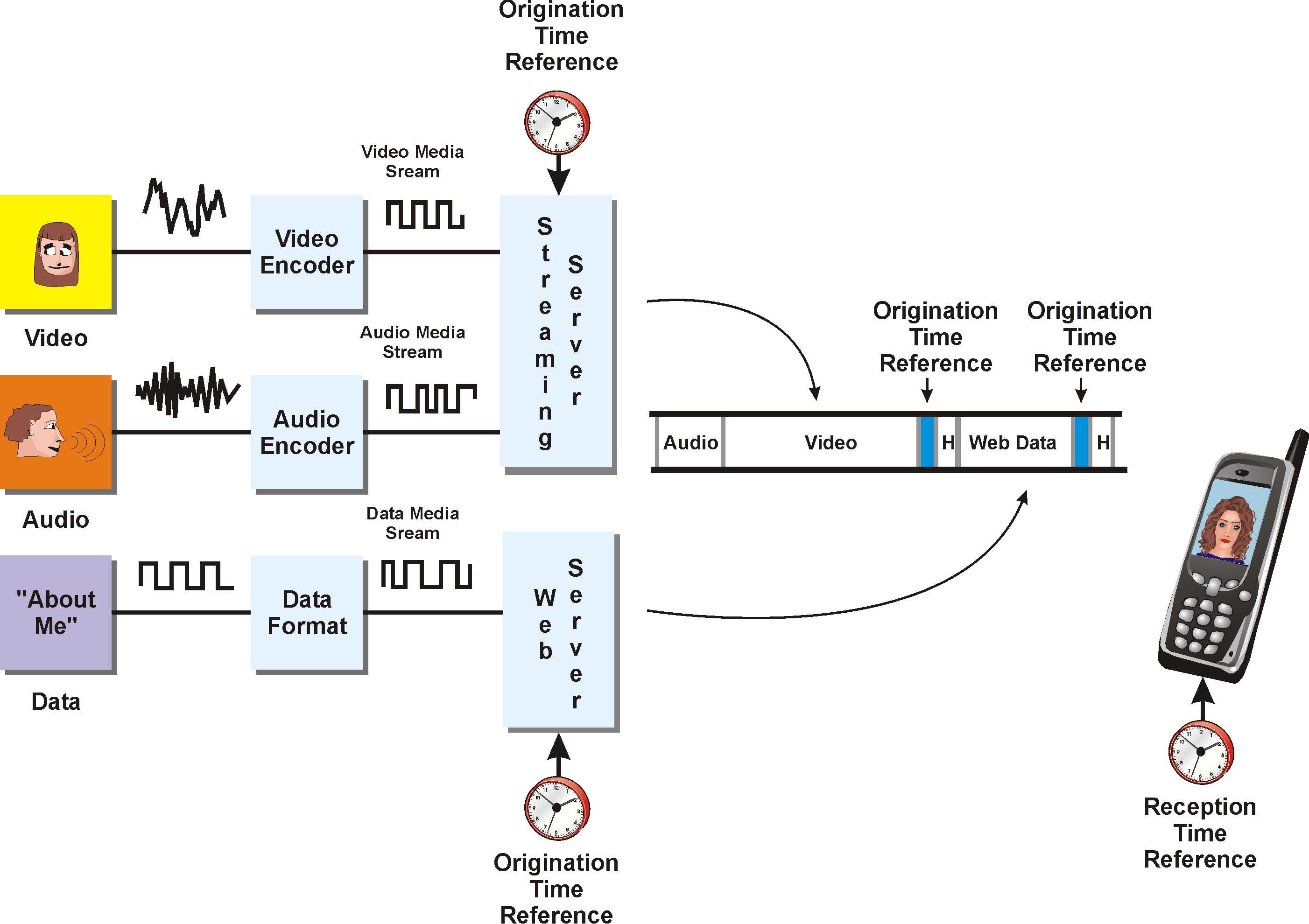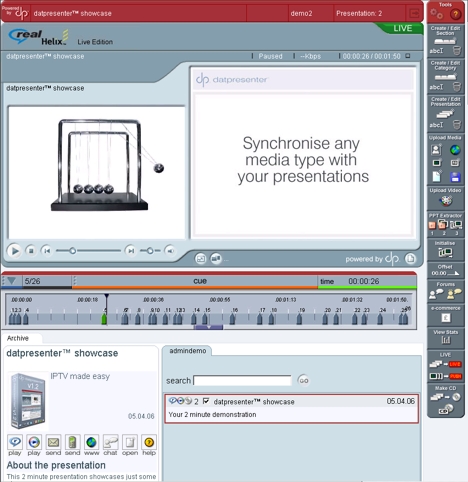|
This week I had the opportunity to interview
Stephen Clee, managing director of DatMedia on how to setup and deliver
video content to mobile telephones.
Steve explained that there are more than 700
million mobile telephones that are capable of receiving video services and
that the number of mobile devices that can receive video services is
dramatically increasing. He described some of the key challenges that keep
companies for developing and providing mobile video services and ways to
overcome them.
Mobile video services may be provided on an
independent media server, a remote host server or even from a standard PC
computer. Companies may setup an independent server based (their own
equipment) to provide media services. These media servers can use Linux,
Windows or MAC operating systems. While media servers have become
relatively inexpensive, companies that own and manage their own servers
typically have skilled IT people who can setup and manage the server
configurations.
A hosted media server (remote server) may be
used by companies who do not have the technical expertise to setup and
manage computer servers. This solution is a bit more expensive than stand
alone systems |
(the hosting company must cover its costs
and make a fair profit). However, this solution allows companies to
more rapidly setup mobile video services and it may be an excellent
solution for companies to start gaining experience in providing mobile
video services. An example of a hosted company is YAMGO who can be
reached at web address
http://www.yamgo.com.
Another alternative is to provide mobile
video services using a low cost personal computer (PC). While the PC
is not a server (not able to receive and process service requests from
many users), it can be used to develop and provide a television
channel. In essence, this solution can turn a Windows XP computer an
IPTV channel source.
Figure 1 shows the key options available
for providing video services to mobile telephones. This diagram shows
how a separate media server can be used to receive and process
requests for mobile video channels. A hosted mobile video solution and
a separate company allow a media server to be shared by several
companies for mobile video services. This example also shows how a
personal computer can be used to provide mobile device program
origination and management of the service. |
|
|
 |
|
Figure 1, IPTV Server Options |
|
A key part of developing and providing mobile
video services is the content management system. The content management
system allows for the gathering (ingesting), organizing and packaging
content that will be selected and delivered to mobile video devices.
Steve explained that the content management
system should be simple to allow non-technical people to develop mobile
video content. Some of the key features of content management systems |
include drop and drag media insertion and
movement, media sequencing (TV channel creation), selectable content
formats (bits rates, coder types), and media synchronizing
Figure 2 shows a screen shot of the
DatMedia IPTV Scheduler. This example shows how operators can simply
drag and drop media into a channel in the sequence order that the
channel will play out. |
|
 |
|
Figure 2, Screen shot IPTV Scheduler |
|
Multimedia capable mobile devices have recently
gained full IP service functionality. This opens the way for delivery of
IPTV services. An important part of creating an interactive television
program is the synchronization of video and audio along with time
sequencing other media. To synchronize media streams (e.g. video, audio
and other media), the media sever periodically inserts timing reference
signals into the media stream. The media player can be interrogated for
timing reference marks which can be used to time synchronize the media.
Figure 3 shows how timing reference signals are
used to time synchronize multiple media sources. This example shows that
each media source contains an origination time reference and these |
media sources are compared to a time
reference in the media player that is located at the receiver. The use
of these time references allows all the media to be recreated in the
correct time sequence that are relative to each other.
Mobile video service providers can create
new revenue producing services by using interactive controls. Some of
these services include mobile commerce (M-Commerce), customer service,
expandable advertising and viral marketing.
To create mixed media services, mobile
video service providers need development tools that staff and managers
can use without the need for extensive programming knowledge.
|
|
 |
|
Figure 3, Media Timing Signals |
|
|
|
 |
|
Figure 4, Media Synchronization Setup |
|
Figure 4 shows how operators can create a mix
of mobile applications that are synchronized with each other. This screen
shot shows that the toolbar allows an administrator to gather content from
a mix of streaming (audio and video) along with web based media (document
, image and animation files) and that these media items are played
relative to each other using timing marks. |
 Stephen
Clee is the managing director of Datmedia, Ltd. Stephen has considerable
expertise in the areas of interactive online multi-media. He was part the
UK's first internet radio station launched in 1996 (Interface Radio) and
his team has performed many firsts in internet broadcasting. Stephen
Clee is the managing director of Datmedia, Ltd. Stephen has considerable
expertise in the areas of interactive online multi-media. He was part the
UK's first internet radio station launched in 1996 (Interface Radio) and
his team has performed many firsts in internet broadcasting. |
|
Datmedia is a leader in
developing technology and software for online presentation and IPTV
systems. Datmedia offers a range of complimentary services in the
following areas: audio-video production, encoding, skin design, software
development and hosting. |